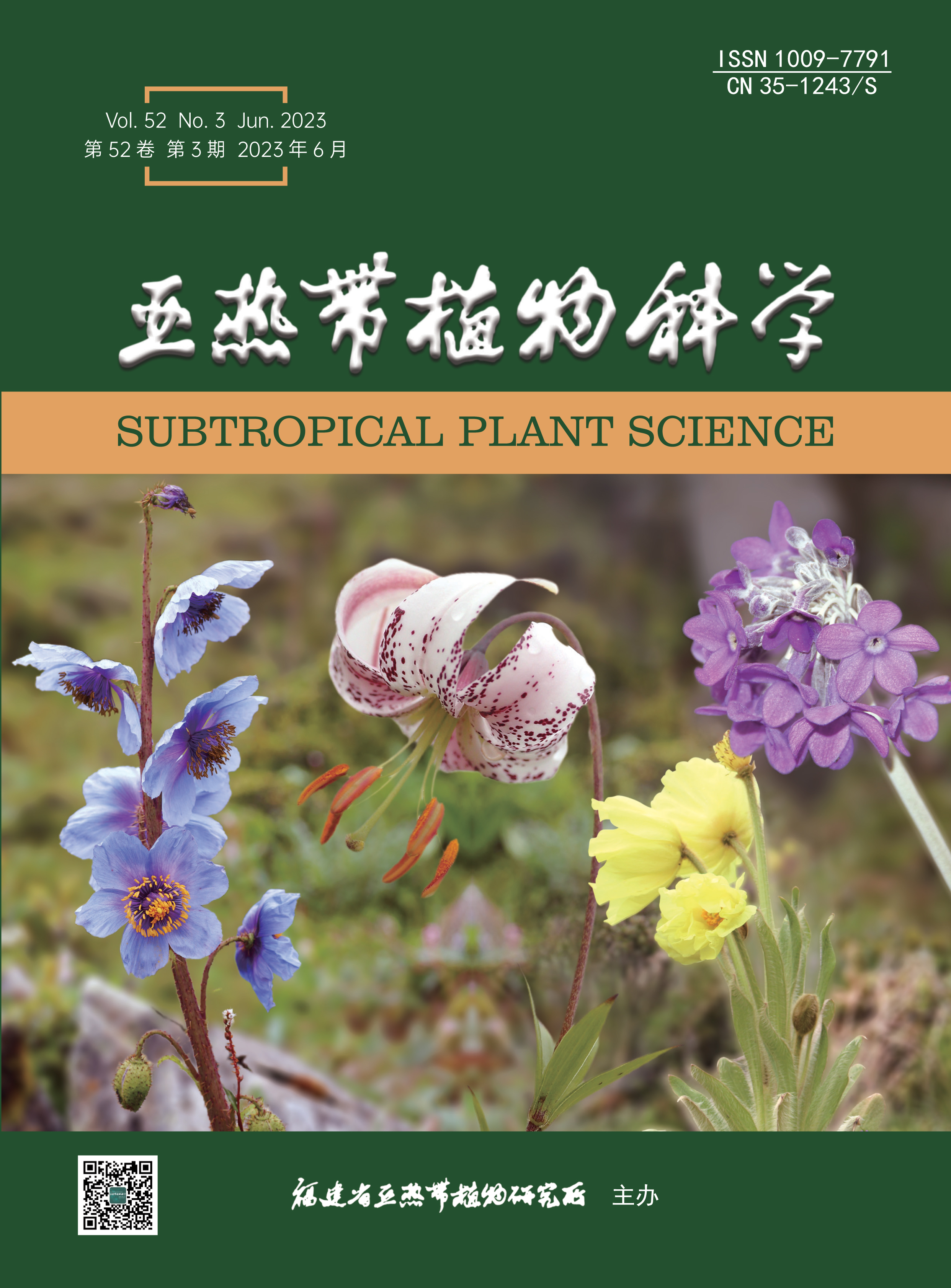|
|
Effects of Chemical Fertilizer Reduction Combined with Rapeseed Cake Fertilizer on Carbon and Nitrogen
Metabolism and Yield of Flue-cured Tobacco
NIE Zhong-yang, ZU Qing-xue, LIN Song, ZHANG Yi-fei, LI Guo-ming
2023, 52(3):
210-219.
DOI: 10.3969/j.issn.1009-7791.2023.03.006
In order to further verify the effects of organic fertilizer on the growth and metabolism of tobacco plants, find the best ratio of chemical fertilizer reduction under organic fertilizer application. Used Yunyan 85 as the experimental material, set up 4 treatments, i.e. CK [special fertilizer for tobacco(N:P2O5:K2O=10:10:25), 930 kg·hm–2], T1 (reduced chemical fertilizer 15% + 300 kg·hm–2 rapeseed cake fertilizer), T2 (reduced chemical fertilizer 30% + 300 kg·hm–2 rapeseed cake fertilizer) and T3 (reduced chemical fertilizer 45% + 300 kg·hm–2 rapeseed cake fertilizer), to study the effects of four fertilization methods on the activities of carbon and nitrogen metabolism enzymes, carbon and nitrogen accumulation of tobacco at different growth stages, economic status of tobacco leaves after curing. Compared with pure application of chemical fertilizer (CK), the dry matter accumulation, chlorophyll contents and photosynthetic rates, carbon contents, carbon accumulation, nitrogen contents and nitrogen accumulation of tobacco leaves with T2 treatment increased by 5.49%, 33.86%, 32.79%, 23.43%, 16.89%, 17.09% and 11.03%, respectively, after transplanting for 80 days. The activities of amylase and nitrate reductase showed a trend of first increasing and then decreasing with the growth period; After transplanting for 20 days, the activities of both enzymes showed that CK was higher than that in the treatment of reducing chemical fertilizer and applying rapeseed cake fertilizer. After transplanting for 35 days, the two treatments of T1 and T2 were significantly improved compared with CK. The yield of tobacco leaves in T1 treatment was the highest, but the average price and the middle class and superior leaf rate were significantly reduced, and the production value, average price and the middle class and superior leaf rate in T2 treatment were the highest, which were increased by 14.58%, 8.94% and 6.08% compared with CK. So reduce chemical fertilizer 30% + 300 kg·hm–2 rapeseed cake fertilizer had the best effects, to provide a theoretical basis for maintaining the stability of tobacco yield and quality and achieving sustainable green-friendly agriculture.
References |
Related Articles |
Metrics
|
